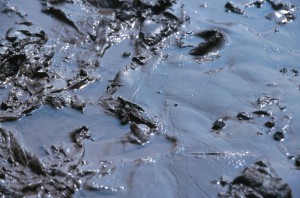The technology dilemma: Connected mud?
I had a short exhange with a mom this week about her school district’s major technology initiative. I pointed out that by the time her young son is in kindergarten, there will be class sets of Android tablets available for use in every K-2 classroom in her suburban district. Her response:
Don’t they get to play in dirt anymore?
Reflexively, I responded that I hoped the teachers were going to have significant professional development to make effective use of the devices and not simply use them as the electronic equivalent to “seatwork,” aka “drill and kill.” But I had to stop and reflect about why I automatically respond to technology initiatives as a positive sign of a forward-thinking (and well funded) school district.
In a serendipitously related meeting with middle school MySciLife teachers, we were discussing how to integrate the online, social learning of MySciLife with hands-on science labs:
Where do labs fit? Which should come first? How do we balance the available time?
These questions are really the same, and they distill down to one omnipresent issue as technology pushes its way into classrooms, with or without the welcome of the adult stakeholders:
How can teachers and parents envision the interplay of technology-facilitated learning, hands-on experiences, and other types of learning?
or, flipping to a skeptical voice…
Do kids really need this technology stuff in (insert grade or subject here)?
As we hear over and over, it’s not about the technology. It’s about learning, and learning happens in many, many ways. Our kiddos need multimodal approaches. Even the young parents of today remember singing out poems about prepositions, standing up and moving to remember a sequence of algebra steps, touching spelling words in the sand, drawing a mind map, and learning in many, many ways. Kids need lots of ways to learn, including dirt.
The tablets just happen to be one type of hands-on dirt. With them, kids can take a picture and write about it. Why not draw a picture with crayons and write about that? I agree. Do both. With the tablets, kids can share with a broader audience, such as posting on a blog or sharing a comic they create. Can’t they do that on paper and post it in the hallway? Sure, but Great Grandma in Vermont won’t see it. They can be real “authors” who connect and collaborate with others in classrooms far away. OK, I get it, but do they NEED that kind of connection? I believe today’s kids need to be digital authors. It is as much an everyday medium as the mud they splash in at the bus stop.
I believe they need digital mud, too. Go back to the young mom I spoke with. Her phone is in her hand all the time. Anytime she is curious, she Googles. Needs a recipe… Google. Wants an idea for a rainy Saturday with her son… online story hour schedule at the library. We all know the cliches…. this is a “digital native,” blah blah blah.
So where does the dirt come in? Digital learning is another kind of hands-on, messy learning. It is our job to balance it so every child — our children, our students — experiences the mess and mud of learning in the science lab, in the outdoors, on our tablets, with crayons and paper (gasp!), and in collaboration with those we can connect to only digitally. Think of it as connected mud.




Thanks for making connection. It is yet unknown what the long term effects of staring at a screen will have on young growing brains. On the other hand, however children do need learn to adpt to their world. Digital mud and mess is a good way to put it.
Comment by smdownes77aol.com — September 14, 2014 @ 11:50 pm